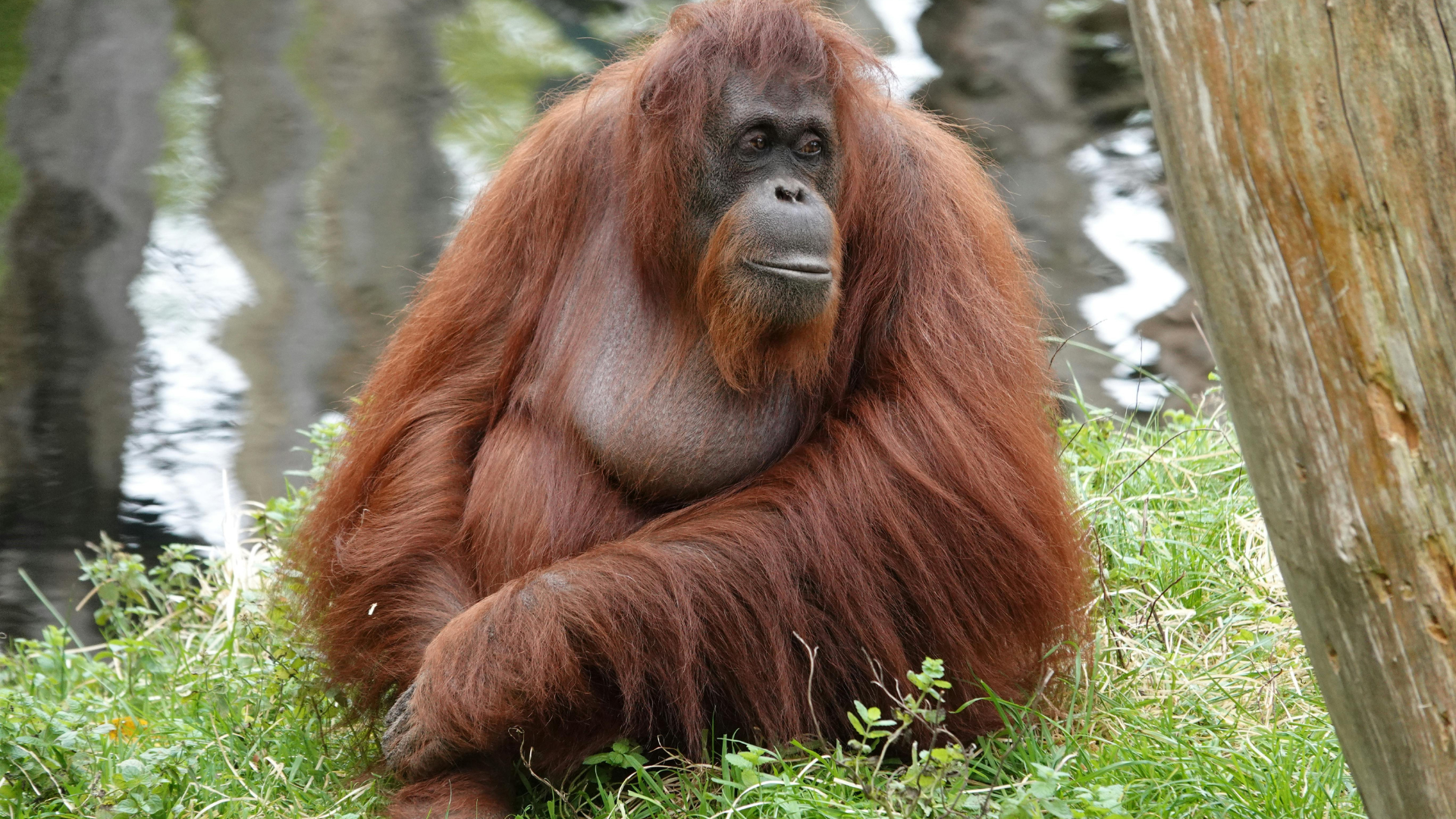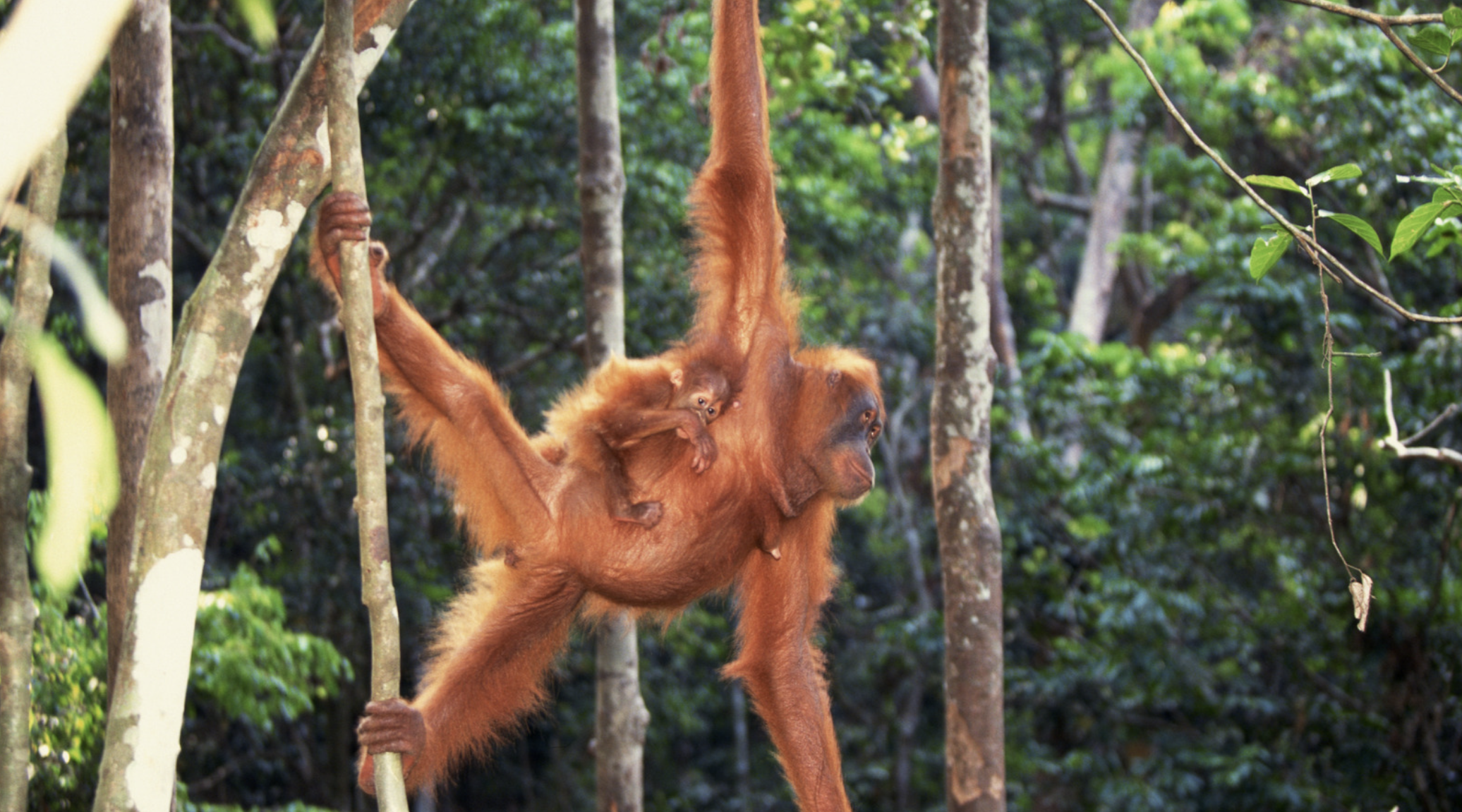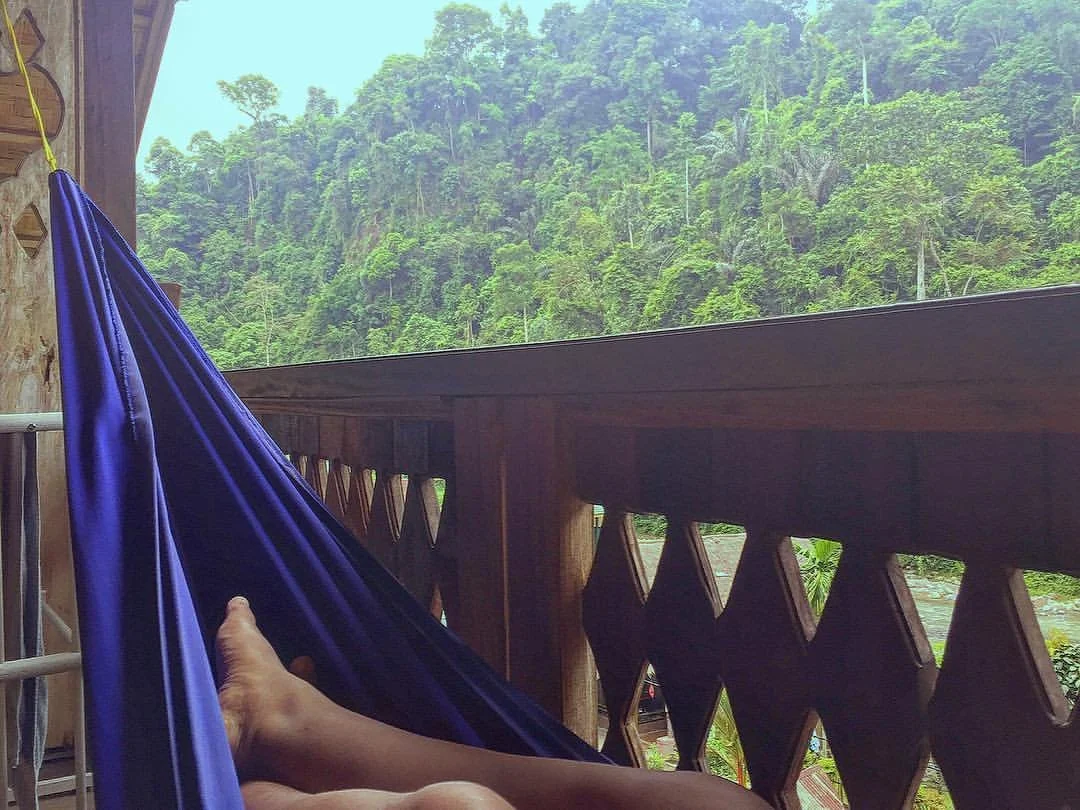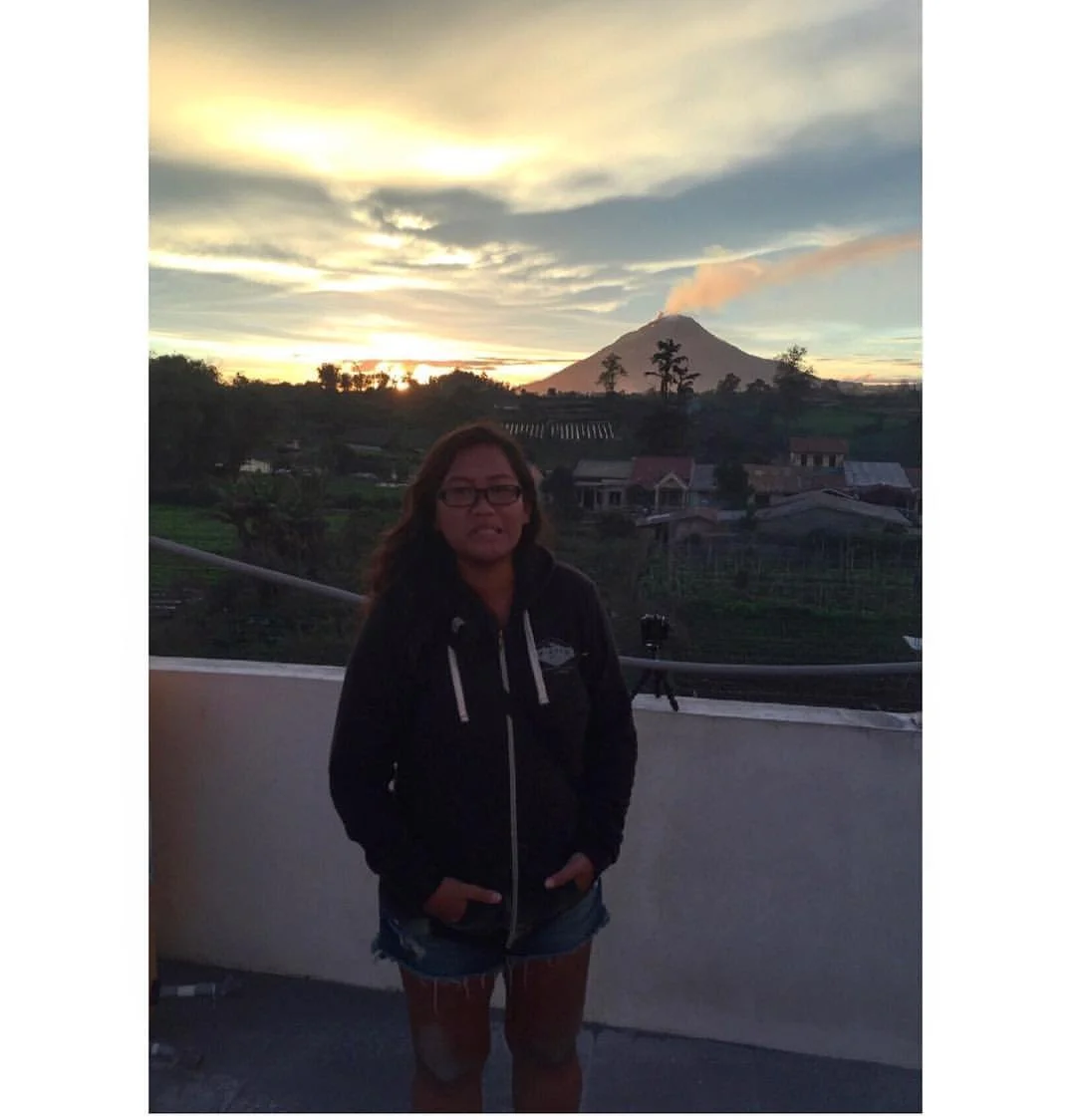North Sumatra Road Trip: Orangutans, Samosir Island & Berastagi Adventures
If you’ve read my blog about backpacking from Penang to Koh Lipe with 10 Danes and a tattoo I still don’t regret, here’s the prequel.
This is where I met them before the beach-hopping, before the questionable tattoo parlor decision, before the moment I somehow became the unofficial trip leader for a Scandinavian entourage.
We all happened to be in North Sumatra, Indonesia, at the same time, chasing our own adventures, me for the orangutans, them for “something exciting” (their words, delivered with the kind of grin that suggests trouble).
The friendship spark happened somewhere between dodging erratic goats on the highway and trying to explain to a bus driver (in three different languages) why eleven full-sized backpacks were not going to fit in the luggage compartment roughly the size of a fruit crate.
North Sumatra, it turns out, has a way of throwing people together.
And once you’ve shared a cramped minivan, a plate of mysterious fried things, and a jungle leech removal session, you’re basically bonded for life.
Why North Sumatra?
North Sumatra isn’t the kind of place you “just drop by” on your way somewhere else. You don’t pass through Medan accidentally. This trip requires intention and a tolerance for unpredictable road conditions.
But here’s the payoff:
In one road trip, you can…
Trek into the jungle to see wild Sumatran orangutans.
Cross Lake Toba, the largest volcanic lake in the world, to reach Samosir Island.
Climb an active volcano in Berastagi.
Sample some of the best tropical fruit and spiciest food Indonesia has to offer.
It’s nature, culture, adventure, and a dash of chaos, all rolled into one.
Stop 1: Bukit Lawang — Hanging Out with the Locals (the Orangutans, Not the Tourists)
Bukit Lawang is a small riverside village on the edge of Gunung Leuser National Park, part of the UNESCO-listed Tropical Rainforest Heritage of Sumatra. This is one of the last places on Earth where you can see Sumatran orangutans in the wild.
The journey from Medan takes about 4–5 hours, depending on traffic, weather, and how many unplanned roadside durian stops your driver makes. The Danes and I arrived hot, dusty, and slightly traumatised from the pothole-ridden road but instantly charmed by the village’s laid-back atmosphere.
The Jungle Trek
The next morning, we set off with our guide, a wiry man in flip-flops who could probably navigate the forest blindfolded. Within an hour, we saw her: a female orangutan with a baby clinging to her side, both framed perfectly by the lush green canopy.
She glanced at us briefly, an expression that read “Oh, tourists”, then returned to stripping leaves. The baby peeked out curiously, all gangly limbs and bright eyes.
It’s hard to overstate how incredible it feels to watch these animals in the wild. Knowing they’re critically endangered adds weight to the experience, you realise you’re witnessing something fragile, something that could disappear in your lifetime.
Pro tip:
Wear proper shoes (you will be scrambling up and down muddy slopes).
Bring water and a sense of humour, Sumatran humidity is no joke.
Don’t feed the orangutans. Yes, they’re cute. No, they don’t need your banana.
Bukit Lawang Nights
In the evening, the village shifts gears. Guitars come out, the river cools, and small groups gather to chat over kopi or Bintang beer. The Danes and I ended up on the guesthouse steps, swapping travel stories and exotic fruit. Somewhere between the mangosteen and the rice wine, someone said, “You should come with us after this. We’re heading north”. Dear Gentle Reader, I went.
Stop 2: Samosir Island — Life in a Volcano’s Bathtub
From Bukit Lawang, we wound our way toward Parapat, the ferry point for Samosir Island in the middle of Lake Toba. The drive was long, made longer by the need to occasionally swerve for cows, chickens, and once, an entire wedding procession spilling into the road.
First Impressions
Lake Toba is enormous, so big it feels like an inland sea. It was formed around 74,000 years ago by one of the most massive volcanic eruptions in history, and Samosir Island sits right in the middle of its shimmering blue expanse.
We based ourselves in Tuktuk, a little peninsula lined with guesthouses, cafés, and the occasional shop selling Batak wood carvings. It’s the kind of place where hammocks outnumber chairs and plans dissolve the minute you see the lake.
Exploring Batak Culture
The Batak Toba people are proud of their heritage, known for their distinctive houses with steeply pitched roofs, their music, and their spicy food. We visited Ambarita Village, where stone chairs once served as a meeting place for village leaders (and, occasionally, as the site for grim executions).
At Simanindo Museum, we were pulled into a traditional Batak dance performance, me with all the grace of a confused giraffe, the Danes at least making it look vaguely intentional.
One of the joys of Samosir is slowing down. Afternoons here are for swimming in the cool, fresh lake water, reading in hammocks, and lingering over coffee as the light shifts across the mountains.
Pro tip:
Rent a scooter to explore the island, traffic is minimal, and the views are spectacular.
Try saksang (a Batak pork dish) if you’re adventurous with food.
Stop 3: Berastagi — Fruit, Flowers, and Fiery Volcanoes
Our final main stop before looping back toward Medan was Berastagi, in the cool Karo Highlands. The air here is refreshingly crisp after the lowland heat, and the town is famous for its markets and nearby volcanoes.
Mount Sibayak Sunrise Hike
We set out at an hour I usually reserve for sleeping through questionable life choices. The climb was steep but manageable, and by dawn, we were standing on a steaming, sulfur-scented summit. Clouds swirled below us, and the rising sun lit the crater walls in shades of gold.
Mount Sibayak is the friendly local volcano. Mount Sinabung, on the other hand, is its unpredictable sibling, after being dormant for 400 years, it’s been erupting intermittently since 2010.
Berastagi Market
The market is a riot of colour, pyramids of passionfruit, piles of snake fruit, heaps of strawberries, and crates of flowers. We bought more fruit than was strictly reasonable and somehow ate it all in two days.
The Road Trip Vibe
Traveling across North Sumatra is an experience in itself. Between destinations, you’ll encounter:
Roadside stalls selling fried snacks you can’t identify but can’t resist.
Goats, chickens, and occasionally children darting across the road.
Endless opportunities for impromptu photo stops: rice paddies, waterfalls, mountain vistas.
It’s messy, hilarious, and unpredictable, in other words, perfect.
How This Trip Became Another Trip
By the time we reached Berastagi, the Danes and I were no longer just travel acquaintances. We were a unit, a slightly chaotic, mismatched, but highly functional road trip family.
They invited me to join their next leg: backpacking from Penang to Koh Lipe. I said yes without hesitation. That trip became its own saga of island-hopping, spontaneous parties, and one permanent souvenir in the form of a tattoo (you can read the full story here).
Looking back, it all started here, in the humid jungles, on the winding mountain roads, and by the calm waters of Lake Toba.
North Sumatra Road Trip Tips
Travel slow: the map lies; everything takes longer than you think.
Bring cash: ATMs are rare outside towns.
Pack layers: it’s hot in the lowlands but cool in the highlands.
Learn some Bahasa Indonesia: even a little effort goes a long way.
Embrace the unexpected: delays, detours, and surprises are part of the charm.
North Sumatra isn’t polished or predictable like Bali.
It’s raw, real, and full of moments that will stick with you whether it’s locking eyes with a wild orangutan, swimming in a volcanic lake, or laughing with strangers who become friends.
And sometimes, if you’re lucky, it’s the kind of place where a simple “come with us” turns one trip into another entirely.
Thank you for reading and now back to happily roaming!







